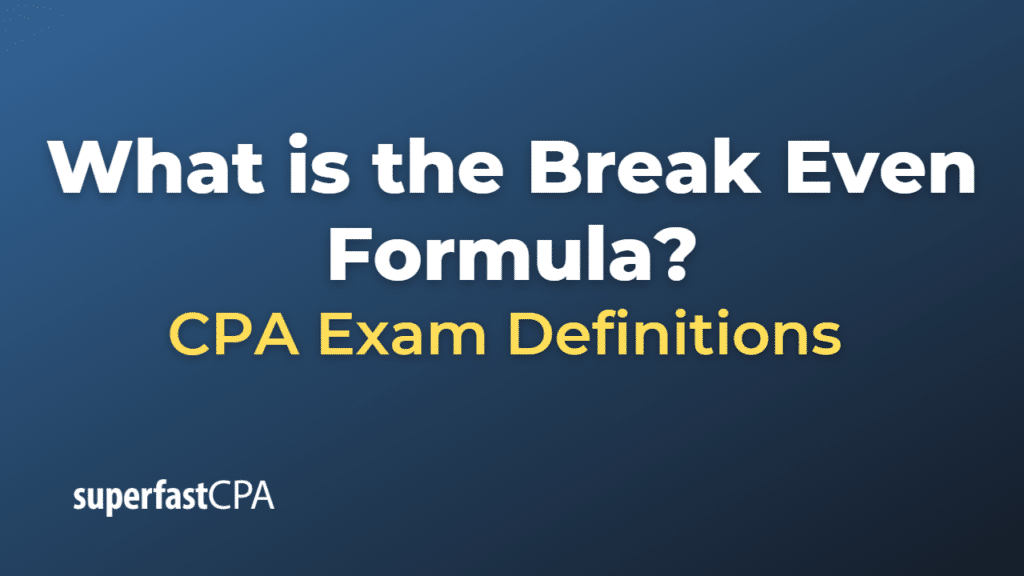Break Even Formula
The break-even formula is used to calculate the point at which a business’s total revenues equal its total costs, meaning the business neither makes a profit nor incurs a loss. The formula is as follows:
Break-Even Point (in units) = Fixed Costs / (Selling Price per Unit – Variable Cost per Unit)
Where:
- Fixed Costs are the expenses that remain constant regardless of the level of production or sales, such as rent, insurance, and salaries.
- Selling Price per Unit is the price at which each unit of a product or service is sold.
- Variable Cost per Unit represents the expenses that vary directly with the level of production or sales, such as raw materials, labor, and packaging.
By calculating the break-even point, businesses can determine the minimum sales volume required to cover their costs and make informed decisions about pricing, production levels, and cost reduction strategies to improve their profitability.
Example of the Break Even Formula
Let’s consider a fictional company, Lemonade Delight, which sells freshly made lemonade at a local park. They want to perform a break-even analysis to determine the number of lemonades they need to sell to cover their costs.
The following information is available for Lemonade Delight:
- Fixed costs: $500 per month (includes rent for the kiosk, insurance, etc.)
- Variable costs: $1.50 per cup of lemonade (includes ingredients, cups, etc.)
- Selling price: $4 per cup of lemonade
Using the break-even point formula:
Break-Even Point (in units) = Fixed Costs / (Selling Price per Unit – Variable Cost per Unit)
We can plug in the values:
Break-Even Point (in units) = $500 / ($4 – $1.50)
Break-Even Point (in units) = $500 / $2.50
Break-Even Point (in units) = 200 cups of lemonade
Lemonade Delight needs to sell 200 cups of lemonade to cover its fixed and variable costs and reach the break-even point. Any sales beyond 200 cups will result in a profit, while sales below this level will result in a loss.
Understanding the break-even point allows Lemonade Delight to make informed decisions about pricing, production levels, and marketing strategies. For example, if the company wants to increase its profit margin, it could consider raising the selling price, reducing variable costs, or finding ways to lower fixed costs. Additionally, the break-even analysis can help the company set sales targets and evaluate the feasibility of new product launches or expansion plans.













